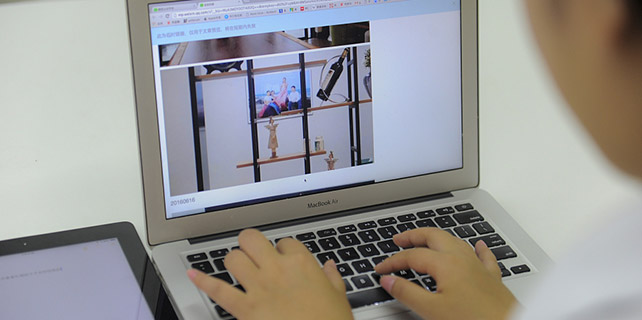Work-study appealing to Chinese in US
Practical training program sees seven straight years of growth
The number of Chinese students taking advantage of an Optional Practical Training (OPT) program in the United States, has seen growth for seven straight years, according to a report released on Tuesday.
The OPT programs allow graduates to work in the field of their major area of study for a year in most cases.
The number of Chinese graduates in such programs reached nearly 60,000 in the 2016-17 academic year, an increase of 14.6 percent from the previous year and more than five times the figure in the 2009-10 academic year, according to the 2017 Open Doors report by the Institute for International Education.
OPT is a transitional period in which international students may be able to change from the status of student to employee. The large number of OPT students reflects the value students see in acquiring work experience after graduation, which makes them more competitive in the job market, said Pauline Kao, a public affairs officer at the US consulate in Shanghai.

"In fact, in the STEM areas - science, technology, engineering and mathematics - the OPT period can last up to three years," she said.
Nearly 80 percent of Chinese students in the US wanted to experience internships or regular employment in the country, according to a survey conducted and published by MentorX, a California-based online education company specializing in advising Chinese students in the US.
In May the survey polled more than 1,600 Chinese students who graduated with bachelor's degrees from US universities and colleges over the past two years.
"In the US job market, there is an emphasis on practical skills, and about 70 percent of new employees were previously interns," said Frank Zhang, general manager in China for MentorX. "Therefore OPT will be of great value to Chinese students if they seize the opportunity."
The Open Doors report also showed that China remains the leading place of origin for students going to the US for the eighth year, comprising 32.5 percent of all international students studying in the country.
In the 2016-17 academic year, 350,755 students from China were studying in the United States.
"Most undergraduate students are self-funded. That reflects economic prosperity: Chinese families are becoming more capable of sending their children to the US, and they place high value on US education," Kao said.
Last year Chinese students at US colleges and universities contributed about $12.6 billion to the US economy, according to the US Department of Commerce.
Another reason for the numbers is the five-year visas available to Chinese students going to the US. Such visas usually cover the entire length of their study, said William Weissman, a US consular officer in Shanghai.
The report also found that 11,689 students from the US were studying in China in the 2015-16 academic year - an 8.6 percent decrease from the year before and part of a declining trend over the last four years.
"The reasons may be that American students can now take up Chinese studies in the US and don't necessarily have to come to China for those programs," Kao said. "But we are very much encouraging American students to come to China to study," she said.
"During US President Donald Trump's visit to China last week, he and President Xi Jinping encouraged greater exchanges at all levels, including educational and cultural exchanges," she said.
zhouwenting@chinadaily.com.cn
(China Daily USA 11/15/2017 page2)
















